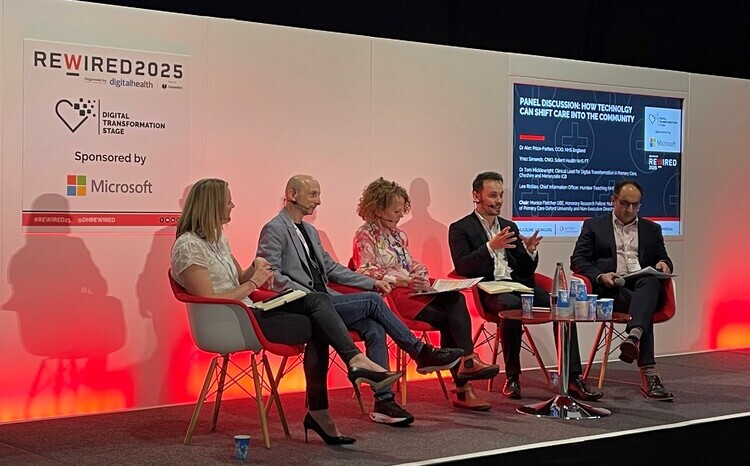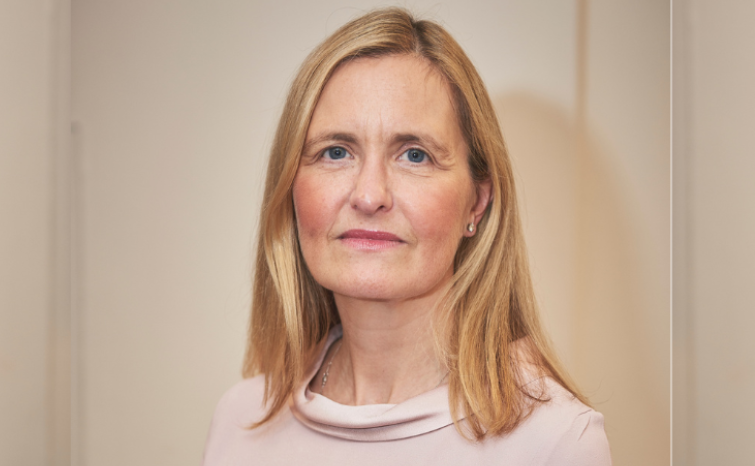Site visit: ONC course at Clatterbridge
- 5 December 2016

Thomas Poulter is getting close to achieving one of his personal ambitions. In fact, thanks to an ambitious project that has seen the trust move from four major clinical IT systems to just one, he may get there as early as January.
The ambition, which Poulter has held since he became Clatterbridge Cancer Centre’s IM&T director in 2008, is to get rid of the “suitcases” that have been used to transport patient notes between sites.
“I made it my personal issue to eliminate these suitcases,” he says. “I haven’t quite achieved it yet, but from January 2017 we expect to fully withdraw the paper format case notes.”
Transforming Cancer Care project
When Poulter joined the trust, after a career spent mostly in local council IT, Clatterbridge was running an IMS Maxims patient administration system with some clinical functionality, an Ascribe pharmacy and electronic prescribing system, and the eCeptionist chemotherapy scheduling system.
That left a lot of work on paper. Hence the suitcases, which Richard Griffiths, chief clinical information officer and consultant oncologist, says some consultants would even “drag back to their car!” He agrees wholeheartedly that: “It was really an outdated system, it was ripe for innovation.”
In August 2014, Clatterbridge chose Meditech to supply a new electronic patient record and signed a ten-year, £7.5 million contract with supplier Centennial MIT.
The decision was made ahead of the Transforming Cancer Care project, which has at its heart a new £118 million specialist cancer centre in Liverpool city centre, and is due to open in 2019.
“What we’re really focused on is the 2019 date”, says Poulter, “because we want the system to be optimised, stable and bedded into routine clinical use, so that when the new hospital opens we’re not working with unproven or unstable IT solutions.”
For Griffiths, one of the most important aspects of the project is committing to deliver therapies locally where possible, but to deliver more specialist treatment centrally; and to make sure the trust’s IT can support this.
Remote locations
The broad catchment area of Clatterbridge makes local treatment crucial. The trust spans 2.2 million people, mostly within the Cheshire and Merseyside region, but also reaching out to the Isle of Man.
If care is going to be delivered across this geographical area, then the EPR has to be accessible from remote locations. That has meant making provision for mobile working, says Poulter, alongside the facilities to deliver chemotherapy at home.
Delaying the go-live
The Meditech go-live was initially pencilled in for 11 February this year, but in December 2015 the decision was made to delay it by three months, primarily for reasons of clinical and patient safety.
Clatterbridge was also the first trust in the NHS to implement Meditech’s oncology module, helpfully nicknamed “ONC”. Being the guinea pig meant working through several iterations of the module, and some international site visits and conference calls.
Poulter remembers trying to organise one particular call to Hawaii, with “something like a 23-hour time difference.”
Five months on from go-live, Poulter feels the delay decision was correct. “We made the decision that we weren’t quite ready, and I think everyone here at Clatterbridge will stand by that decision, and say that it was the right thing for us to do.”
Top tips from the go-live weekend in May
The reset go-live date was 23 May. Clatterbridge had experts from Boston-based Meditech on hand when a staged migration began on 18 May.
With the benefit of hindsight, one lesson the IT team is keen to convey was the importance of enabling clinicians to familiarise themselves with the programme.
Chemotherapy prescriptions had to be migrated by hand, Griffiths explains, so clinicians had a good idea of how the system looked and worked before go-live. They weren’t coming in “at 9am on a Monday morning” and trying to work with it for the first time in a stressful situation.
There were also 50 floor walkers to support staff on the ground, adds Greg O’Mara, a trust programme manager. “One of the main challenges for us was how do we support, not only here, but [our] 17 other sites as well,” he says.
A temporary support structure was implemented with clear lines of accountability and a quick turn around on problems; another thing that Poulter “would recommend to other trusts who are implementing.” Meanwhile, over the migration weekend the trust deliberately reduced a lot of its activity, which helped to free up staff.
Teething and residual problems
Trust board papers from June say that “while there were some inevitable teething problems, many of the issues identified during the go-live were resolved within a short period of time.”
Poulter says these tended to relate to infrastructure and people. For instance, he says that because staff were unfamiliar with the system, data was not entered as efficiently as it might have been.
There were also some issues around the wi-fi connectivity in some of the more remote clinics, which were resolved in first fortnight.
The same board papers say that while there were delays for “significant numbers” of patients, in the two weeks post go-live no outpatients appointments or clinics had to be cancelled. Griffiths says: “I think we did quite well to keep the show on the road with all the upheaval of introducing a new system.”
Some issues remain. One is pharmacy processes. Previously, these were driven by prescriptions on a dedicated electronic prescribing and pharmacy system. Now, they are driven by patient appointments. Bumps are being resolved through software developments.
Another residual issue is the clinical disposal process, which makes sure that the outcomes of patients’ appointments are recorded. Issues with this are affecting the trust’s activity reporting.
Again, though, Poulter says: “It’s not that there’s something wrong with the system itself, it’s more to do with training and familiarity.”
What can the clinicians do now?
Griffiths is confident the EPR will deliver significant benefits. He says it means he can have oversight of all his patients, generate chemotherapy prescriptions, do clinical noting, and order investigations and lab tests. Having a patient’s data contained within an integrated care record is a “big improvement,” he says.
The IT team recognised the importance of clinical engagement early on, and working with medical staff through groups and executive sponsors meant there was a “two way flow of information”.
However, another top-tip that Poulter passes on is that it’s possible to focus too much on doctors, and not nurses and pharmacy staff. “It’s usually the doctors that shout the loudest, but you can’t let that dictate your engagement policy,” he jokes.
Future plans
While the Transforming Cancer Care programme continues, there are further stages to the Meditech go-live. A patient portal will be implemented in 2017, allowing the public to log-in and see a summary of their oncology medical record and forthcoming appointments.
Integration work is underway with the Emis Health systems used by local GPs, to enable information sharing between primary and secondary care in the area.
A mock HIMSS level 6 assessment found that, with a bedside verification module, Clatterbridge should be awarded that rank, and the trust is aiming for this in early 2017.
Reflecting on the progress it has made, Poulter says: “There’s a bit of a pain barrier to go through. But once you’ve done that you should be in a position where the organisation-wide processes are more efficient and more integrated.”




